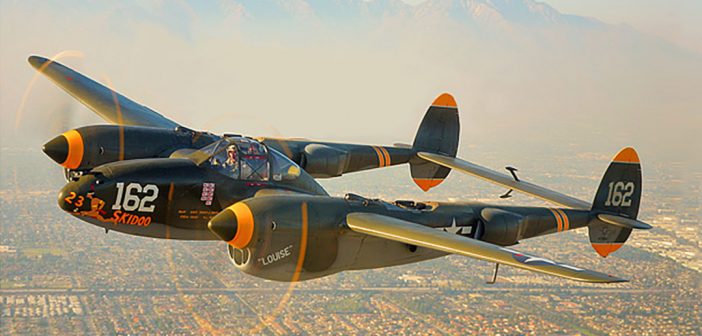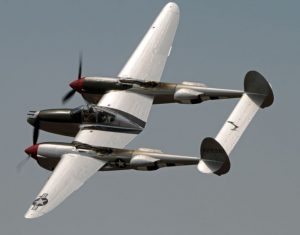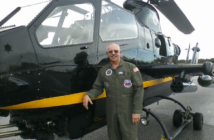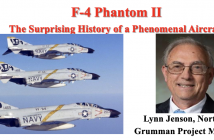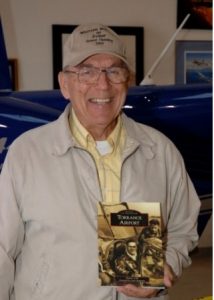 Zamperini Field, a.k.a. Torrance Municipal Airport, a.k.a. Lomita Flight Strip has an illustrious history, and nobody knows that history better than Chuck Lobb. Air Force Officer, engineer, pilot, and aerospace history authority, Chuck has compiled a wealth of historical data about Lomita Flight Strip. Of course, one of the most important historical roles played by Lomita Flight Strip was its wartime service as the training field for the P-38 Lightning pilots. Many of the pilots who went on to help win the air conflict in WWII honed their craft in Torrance. At the time of World War II, Lomita Field was an ideal location to train P-38 Fighter Pilots. From June 1942 until April 1944 five squadrons of Lockheed P-38 Lightning fighters were based here, each with 40 officers, 200 enlisted men and 25 aircraft. As they finetuned their combat skills prior to deployment to bases in England. By mid 1944, Sixth Ferry Command at Long Beach took charge and field activity quickly grew to 2500-3500 movements per month as pilots checked out new war birds prior to delivery to points throughout the world. Brigadier General Robin Olds, famed ace of World War II, Korea and Vietnam, and later Air Force Academy Commandant of Cadet’s began his career here as a fledgling P-38 pilot. Colonel Art Jeffrey, 8th Air Force ace with 14 aerial kills led “C” flight of the 434th Fighter Squadron from Lomita. Record setting Olympian Captain Louis Zamperini, a bombardier and Torrance native, returned from WW II to have the field named in his honor. It’s a fascinating story, and Chuck will share some of that history with us, the same history that filled the pages of his highly acclaimed book, Torrance Airport.
Zamperini Field, a.k.a. Torrance Municipal Airport, a.k.a. Lomita Flight Strip has an illustrious history, and nobody knows that history better than Chuck Lobb. Air Force Officer, engineer, pilot, and aerospace history authority, Chuck has compiled a wealth of historical data about Lomita Flight Strip. Of course, one of the most important historical roles played by Lomita Flight Strip was its wartime service as the training field for the P-38 Lightning pilots. Many of the pilots who went on to help win the air conflict in WWII honed their craft in Torrance. At the time of World War II, Lomita Field was an ideal location to train P-38 Fighter Pilots. From June 1942 until April 1944 five squadrons of Lockheed P-38 Lightning fighters were based here, each with 40 officers, 200 enlisted men and 25 aircraft. As they finetuned their combat skills prior to deployment to bases in England. By mid 1944, Sixth Ferry Command at Long Beach took charge and field activity quickly grew to 2500-3500 movements per month as pilots checked out new war birds prior to delivery to points throughout the world. Brigadier General Robin Olds, famed ace of World War II, Korea and Vietnam, and later Air Force Academy Commandant of Cadet’s began his career here as a fledgling P-38 pilot. Colonel Art Jeffrey, 8th Air Force ace with 14 aerial kills led “C” flight of the 434th Fighter Squadron from Lomita. Record setting Olympian Captain Louis Zamperini, a bombardier and Torrance native, returned from WW II to have the field named in his honor. It’s a fascinating story, and Chuck will share some of that history with us, the same history that filled the pages of his highly acclaimed book, Torrance Airport.
Lomita Flight Strip Goes to War – Charles Lobb Historian and Author
0
Share.

